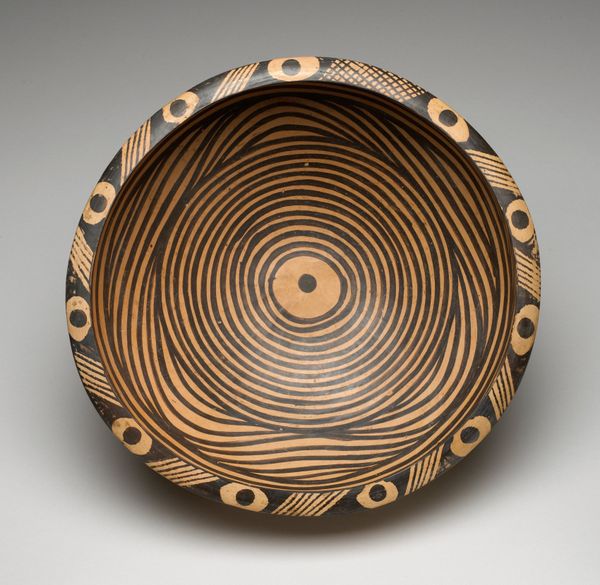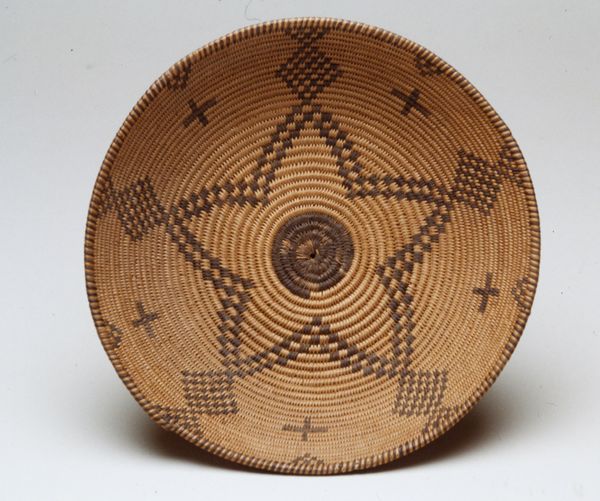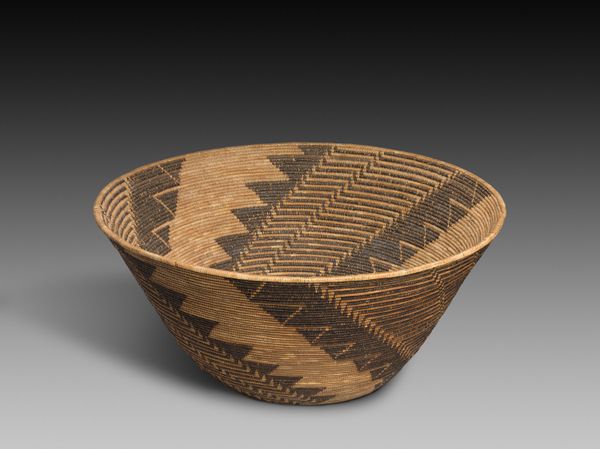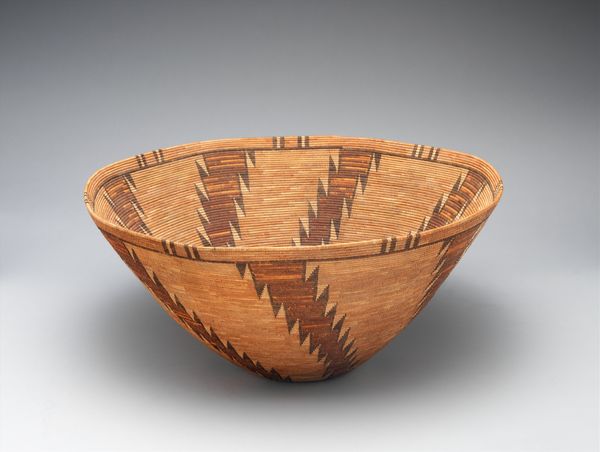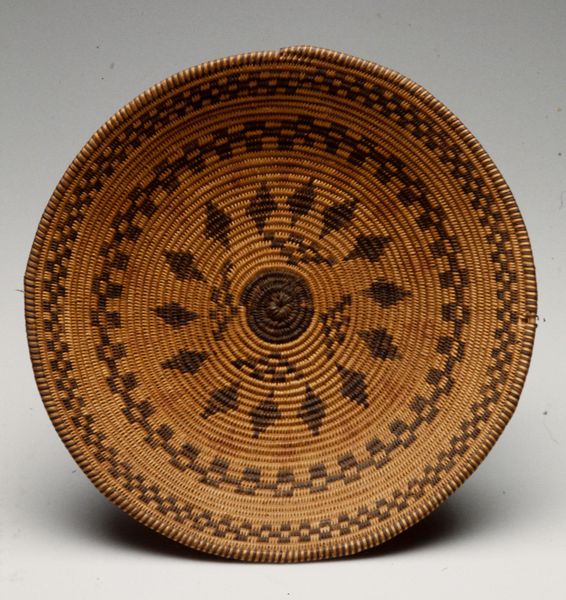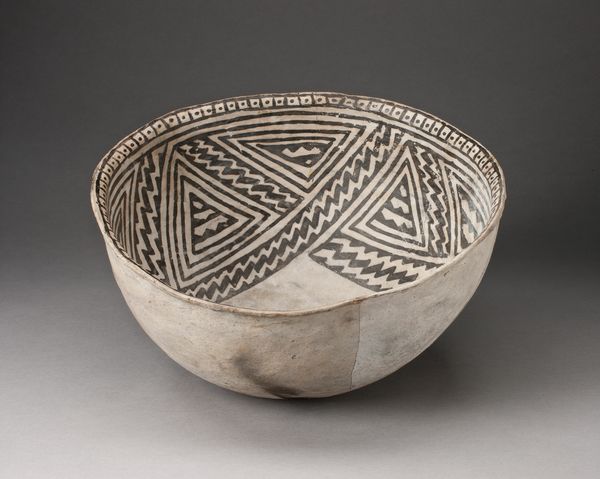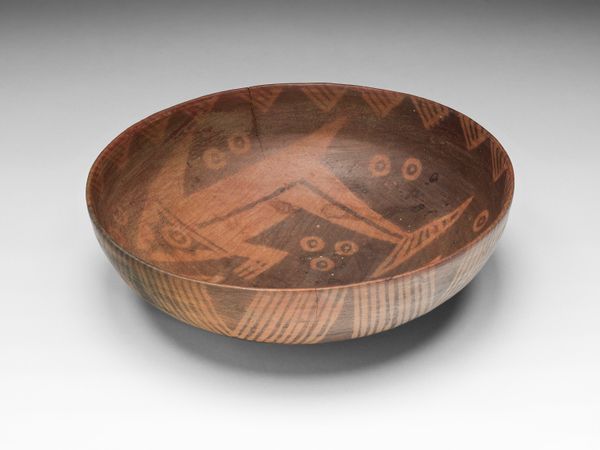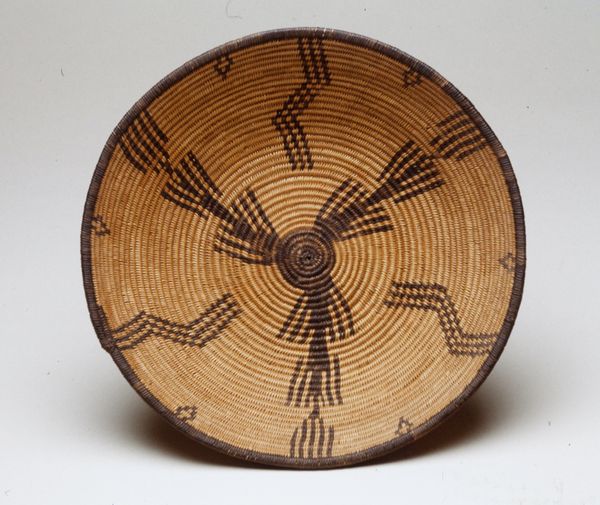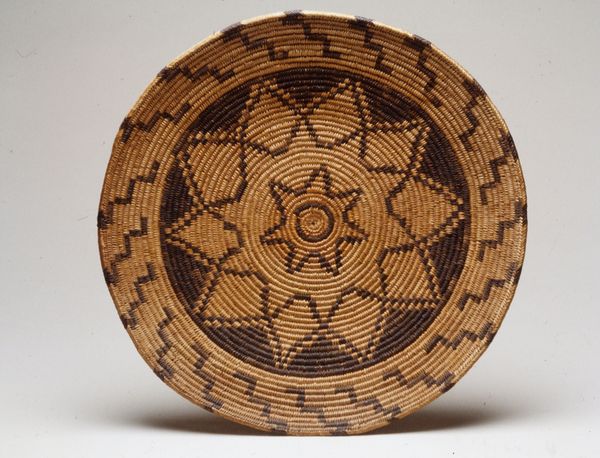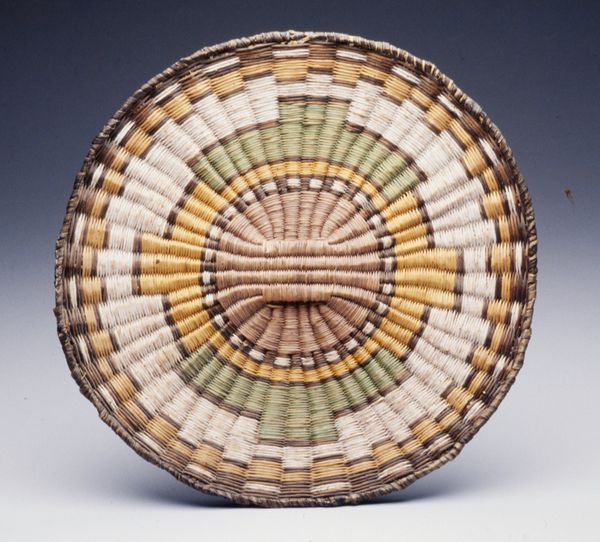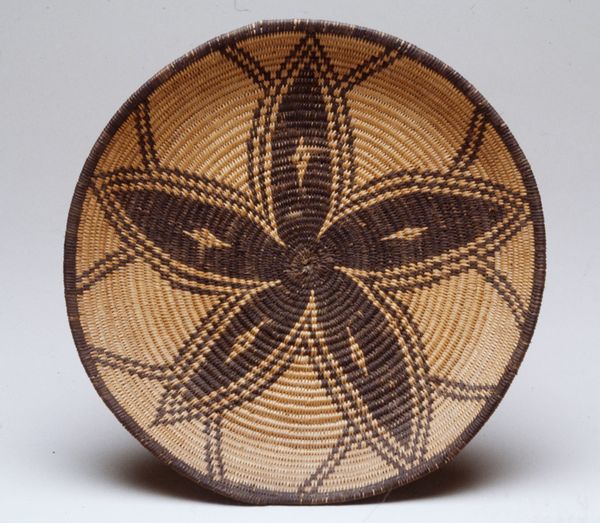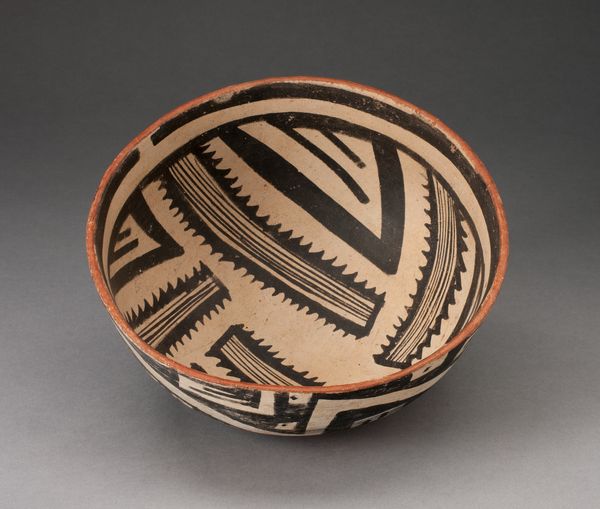
fibre-art, weaving, textile
#
fibre-art
#
pottery
#
weaving
#
textile
#
geometric
#
indigenous-americas
Dimensions: 3 3/4 x 18 in. (9.53 x 45.72 cm)
Copyright: Public Domain
Editor: This basket, woven by an Apache artist, dates back to the 19th or 20th century. The craftsmanship is just remarkable. All those tiny fibers woven into complex geometric patterns. It almost feels hypnotic to look at. What do you see when you look at it? Curator: The basket sings to me of cultural memory. Notice how the concentric circles draw you inwards, toward a deeper meaning, like the rings of a tree telling a story of growth. These geometric patterns, squares evolving to diamonds, echo across generations, embodying stories, beliefs, and connections to the land. It's a coded language isn't it? What do you think it meant for its maker? Editor: I hadn't thought about the basket as language before. Do you think each shape or motif has a specific meaning that everyone in the community would understand? Curator: Precisely. Baskets like these often served functional purposes – holding water, gathering food – but they were never purely utilitarian. They were canvases imbued with meaning. Consider how the repeated patterns can also represent cycles of life, the interconnectedness of all things within their world. Editor: That gives me a whole new appreciation for it. I just saw a beautiful design, but now I recognize how it might hold cultural knowledge. Curator: The visual becomes the vehicle. Even the materials themselves – the specific plant fibers used, the way they are dyed – could hold symbolic weight. It shows how much value went into weaving. Editor: That's incredible to think about. It's much more than just a basket; it's a story woven into existence. Curator: Exactly! The enduring power of these visual symbols resides in their capacity to connect us to the past and reflect on enduring human experiences.
Comments
No comments
Be the first to comment and join the conversation on the ultimate creative platform.
